The portrait of Leo X, the masterpiece by Raphael (Urbino, 1483 - Rome, 1520) at the center of controversy last February because the Uffizi’s scientific committee disagreed on the loan of the work to the major exhibition at the Scuderie del Quirinale, has returned to Florence: the painting then reached Rome, causing the resignation of the scientific committee (which returned a few months later). The work underwent a major restoration, unveiled in October 2017, conducted by theOpificio delle Pietre Dure: today, three years later, the Uffizi unveils new, important discoveries about the masterpiece, which is being displayed in a special exhibition at Palazzo Pitti.
The exhibition, titled Raphael and the Return of the Medici Pope - Restorations and Discoveries, is curated by Opificio superintendent Marco Ciatti and Uffizi director Eike Schmidt, and is being held in the Sala delle Nicchie of the Galleria Palatina in Palazzo Pitti from Oct. 27, 2020 to Jan. 31, 2021. The display is designed to document and explain the complex restoration and numerous scientific analyses carried out on the work, which is now once again fully legible in the luxurious chromatic richness of the dominant red tones and extraordinary variety of details that made the work one of Urbinate’s most famous creations. Thanks to the many preliminary techniques of investigation (radiographic, photographic, imaging, optical microscopy, microprofilimetric scanning, among others) it was possible to fully trace the “texture” of the painting originally drawn by Raphael and to establish that the entire work is integrally due to his hand, dispelling once and for all the doubt, advanced by some scholars, that the figures of Cardinals Giulio de’ Medici and Luigi de’ Rossi had been added at a later time. At the end of the exhibition in the Sala delle Nicchie in the Palatina Gallery, the Portrait of Leo X between two cardinals will find its place in the Sala di Saturno of the same museum, in the company of a series of Raphael’s masterpieces, including the portraits of two other important prelates: that of Pope Julius II and that of Cardinal Bernardo Dovizi da Bibbiena, director Eike Schmidt announced.
The restoration, as anticipated, was carried out by specialists from the Opificio delle Pietre Dure in Florence, under the supervision of Superintendent Marco Ciatti and under the direction of Cecilia Frosinini. Started in the fall of 2017, the intervention had become necessary due to the presence of several small, dangerous uplifts of the original pictorial layers, located in an area of the painting characterized by numerous color ridges badly crushed and shattered during ancient restorations and caused mainly by the compression of contrasting forces that the 19th-century crossbeams discharged on the pictorial surface. The work, the restorers point out, also appeared to be pictorially integrated into the previous intervention with meticulous care, but at the same time communicated the impression of a general lack of definition, due to the overlapping of abundant, albeit refined restoration glazes. This phenomenon was also accentuated by the alteration of the varnish, which was found to be slightly pigmented. The Opificio’s technicians worked very carefully to restore to the painting its original and very wide range of color tones, the perfection of detail imprinted by Raphael’s hand on the clothes, fabrics and objects in the work, and allowed a recovery of the spatiality of the architectural setting, which before was almost totally flattened. The wooden support, which was beginning to show some rigidity, was also restored and the traversing system was made more “flexible” to accommodate the natural movements of the wood.
| <img src=’https://cdn.finestresullarte.info/rivista/immagini/2020/fn/raffaello-ritratto-leone-x-dopo-restauro.jpg ’ alt=“<a href=”https://www.finestresullarte.info/arte-base/raffaello-la-vita-le-opere-i-capolavori“>Raffaello Sanzio</a>, Portrait of Pope Leo X de’ Medici with Cardinals Giulio de’ Medici and Luigi de’ Rossi (1518; 155.5 x 119.5 cm; Florence, Uffizi) ” title=“Raffaello Sanzio, Portrait of Pope Leo X de’ Medici with Cardinals Giulio de’ Medici and Luigi de’ Rossi (1518; 155.5 x 119.5 cm; Florence, Uffizi) ” /> |
| Raffaello Sanzio, Portrait of Pope Leo X de’ Medici with Cardinals Giulio de’ Medici and Luigi de’ Rossi, after restoration (1518; 155.5 x 119.5 cm; Florence, Uffizi) |
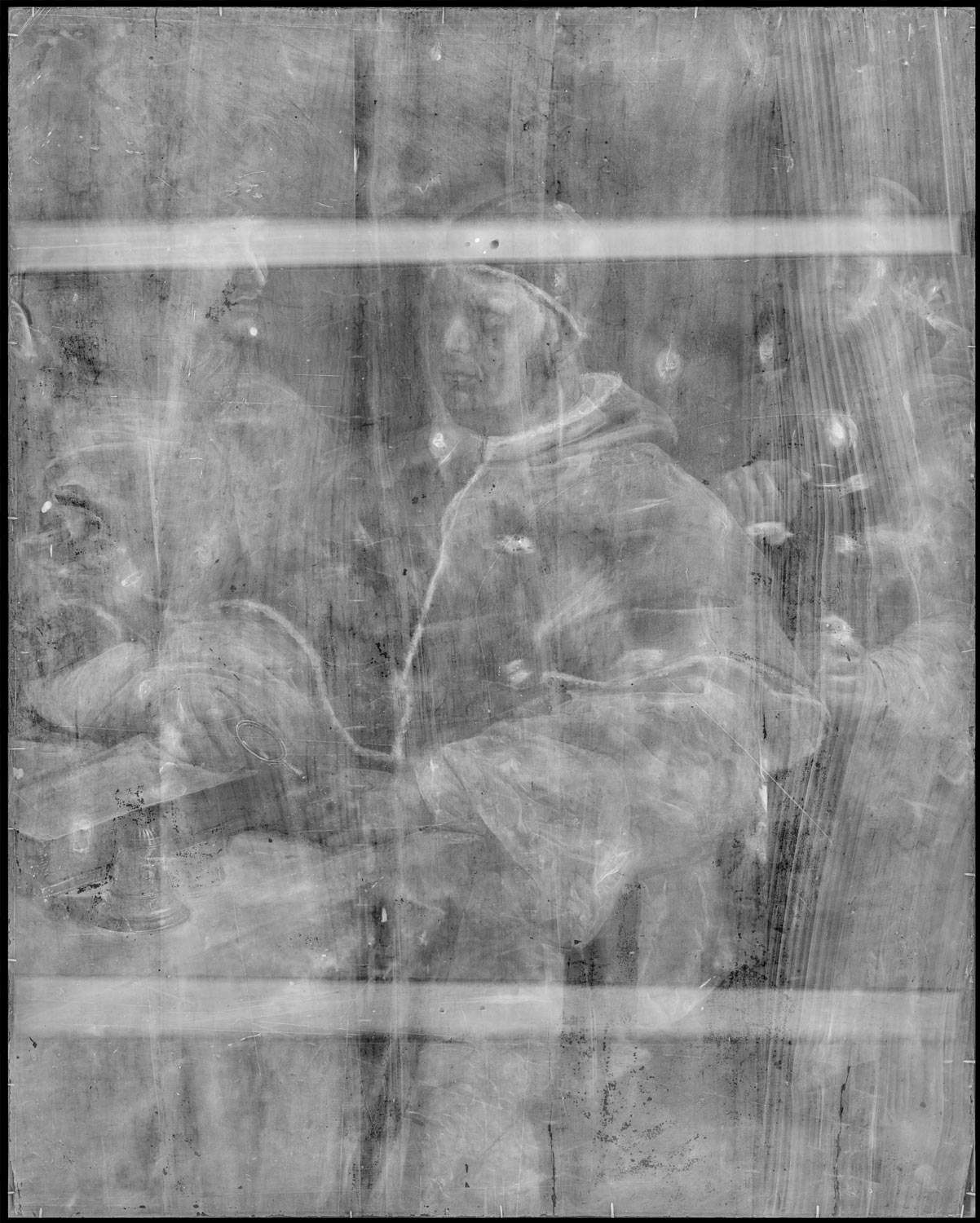 |
| Raphael Sanzio, Portrait of Pope Leo X de’ Medici with Cardinals Giulio de’ Medici and Luigi de’ Rossi, x-ray |
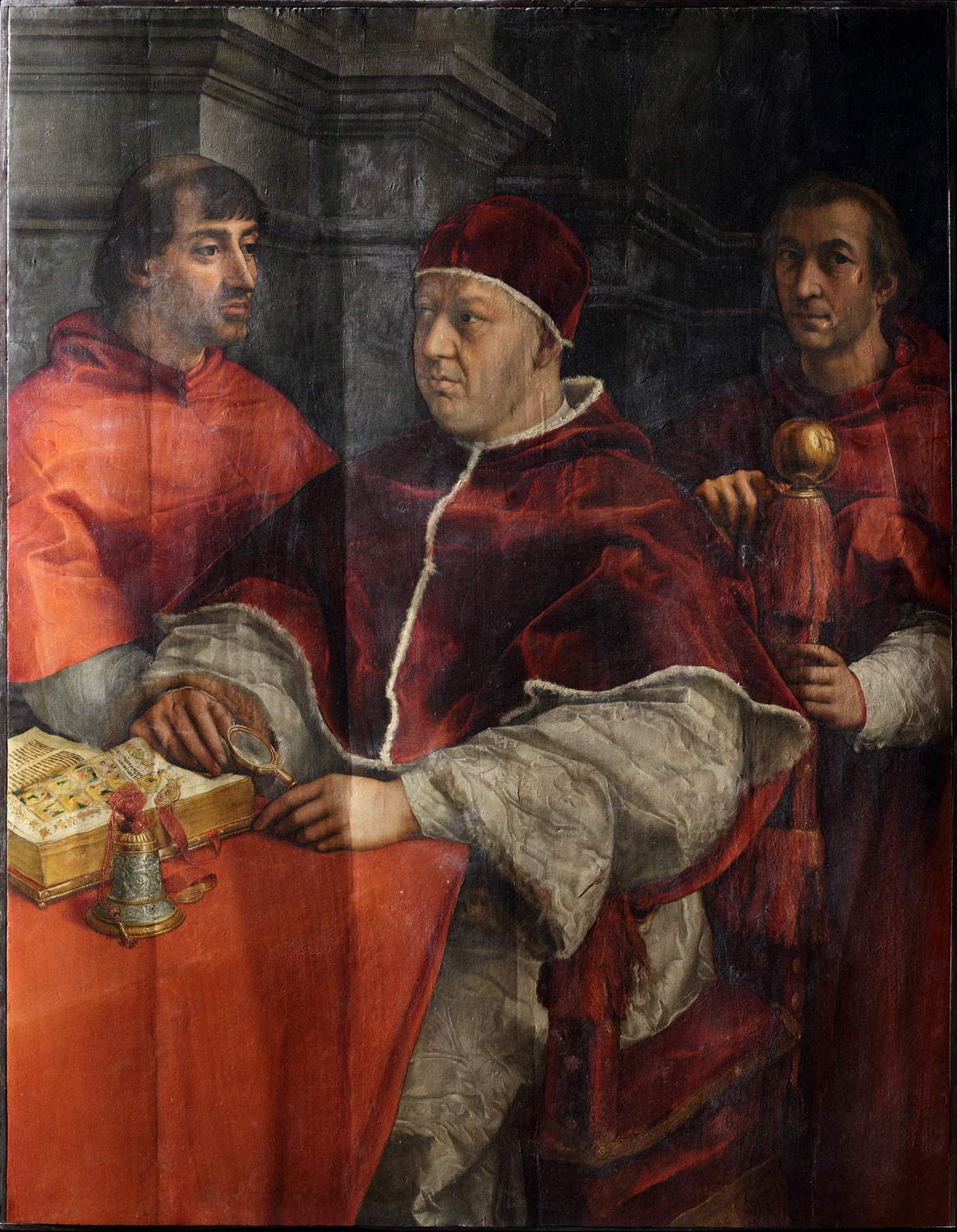 |
| Raphael Sanzio, Portrait of Pope Leo X de’ Medici with Cardinals Giulio de’ Medici and Luigi de’ Rossi, grazing light photograph (before restoration) |
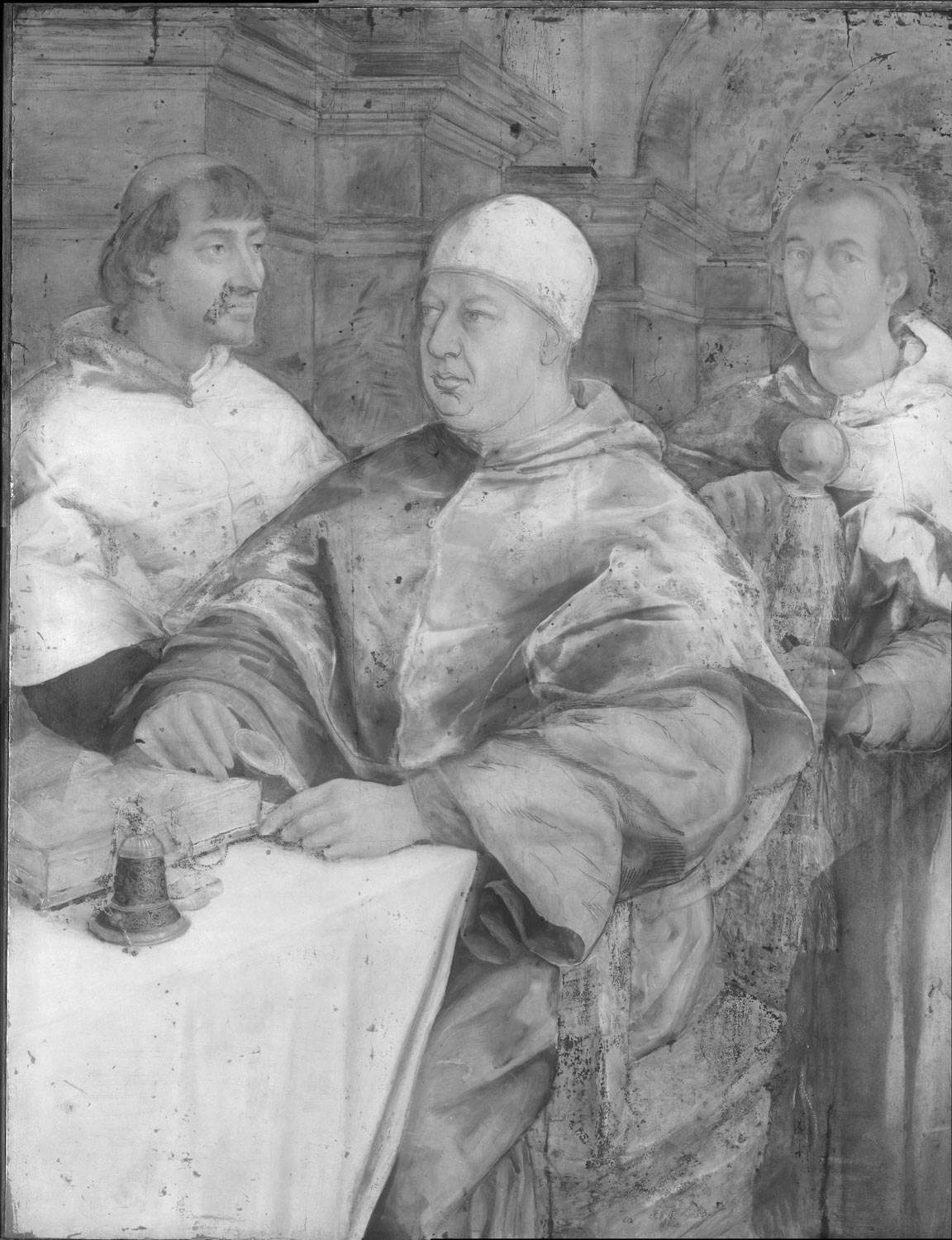 |
| Raphael Sanzio, Portrait of Pope Leo X de’ Medici with Cardinals Giulio de’ Medici and Luigi de’ Rossi, infrared reflectography |
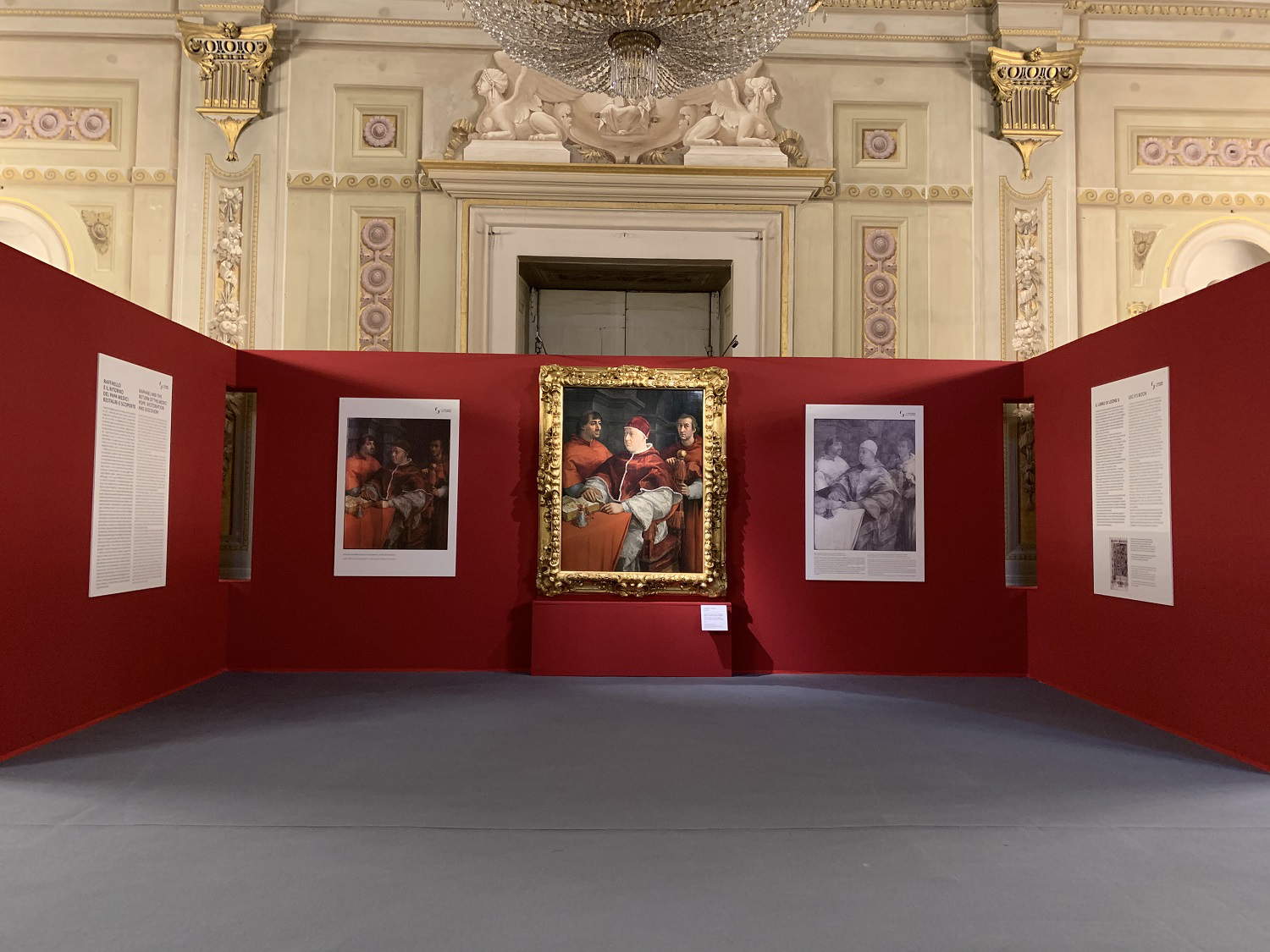 |
| Raphael Sanzio, Portrait of Pope Leo X de’ Medici with Cardinals Giulio de’Medici and Luigi de’ Rossi, infrared reflectography |
The intervention also shed light on its autography since, as anticipated, according to some art historians, the figures of Cardinals Giulio de’ Medici and Luigi de’ Rossi would not have been made by Sanzio’s hand. However, although hypotheses had been put forward by various scholars about a different initial planning of the painting, which would have included only the portrait of Leo X, to which only later would the figures of the two cardinals have been added by another hand, the restoration has made it possible to definitively disprove this reconstruction. The dense network of engravings that preliminarily construct the background architecture and then the pictorial drafting of it itself, in fact, precisely contour the three figures, sparing their relevant area. This means that they were therefore already painted or at least already set at the preparatory drawing level. For this, then, as reflectography shows, Raphael uses two different types of underdrawing, derived from sketches certainly made separately to the three prelates when they had posed for him. From the sketches he derives underdrawing cartoons, to be used for transposition on the painting, but, in great detail, he reinforces and reworks with freehand strokes and perhaps even with the model in front, precisely that of the pope, to give his portrait greater vividness and naturalness.
Raphael’s painting arrived in Florence in early September 1518, in time to be placed “over the table” of the wedding celebrations of Leo X’s nephew Lorenzo de’ Medici, Duke of Urbino, with Madeleine de la Tour d’Auvergne. The bride and groom’s banquet was also attended as a diner by the pontiff’s uncle, in effigy along with no less than two cardinals, both belonging to the Medici family: cousins Giulio de’ Medici and Luigi de’ Rossi. But it is the pope who dominates the scene, in an interior that one senses is severe and monumental, of a gray stone on which the reds and whites, the golds and silvers of the robes, furniture and precious furnishings stand out. Leo X, born Giovanni de’ Medici, is depicted three-quarter-length; he is holding the gold-rimmed lens (almost his identifying mark, given his myopia). With insistent representational research, Raphael places before him, open, a very rich Bible, a masterpiece of fourteenth-century book production in Naples, illustrated for Queen Joanna I by the most important illuminator of the Angevin court, Cristoforo Orimina. On the table in front of the pope can be seen an illuminated codex, a precious, collector’s item, which scholars identify as a book that still exists, a very luxurious Bible preserved today in the Kupferstichkabinett in Berlin, and formerly belonging to a well-known private collection, that of the Duke of Hamilton. It was executed in Naples, around the middle of the 14th century, probably at the request of Queen Joan I of Anjou, to be destined for a member of the French Roger family (for Pierre, who was pope under the name of Clement VI, or for his brother), with whom the sovereign had political and personal relations. The author of the decoration is the miniaturist Cristoforo Orimina, who, together with his aides and collaborators, held the most important miniature workshop in the city, up to date with the latest and highest pictorial trends, such as that of Giotto. Possibly chosen in a dynastic and pro-French political function on the occasion of the marriage between the pope’s nephew Lorenzo and Magdalena de la Tour d’Auvergne, the codex is opened on the principle of the Gospel of John.
<p “With these marvelous objects,” Schmidt explains, “Raphael celebrates, along with the supreme charge of the personage, also the highly refined taste and culture of a member of the house of Medici, an intellectual educated and raised among the most celebrated art collections of the time, a worthy son of Lorenzo the Magnificent.”
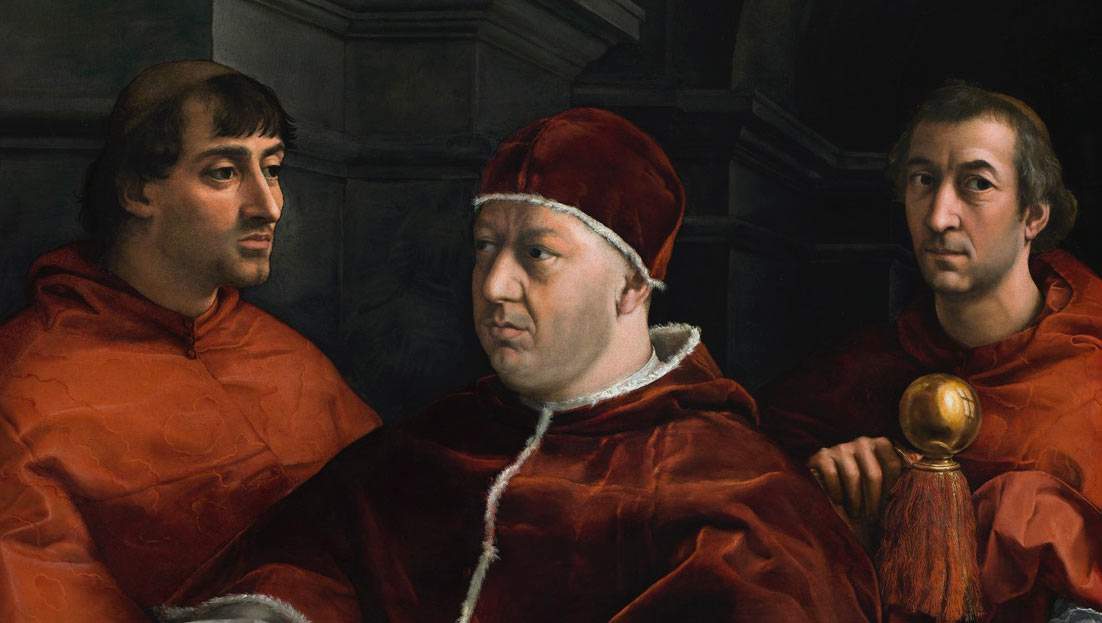 |
| Raphael's Leo X returns to Florence. And there are important discoveries after restoration |
Warning: the translation into English of the original Italian article was created using automatic tools. We undertake to review all articles, but we do not guarantee the total absence of inaccuracies in the translation due to the program. You can find the original by clicking on the ITA button. If you find any mistake,please contact us.